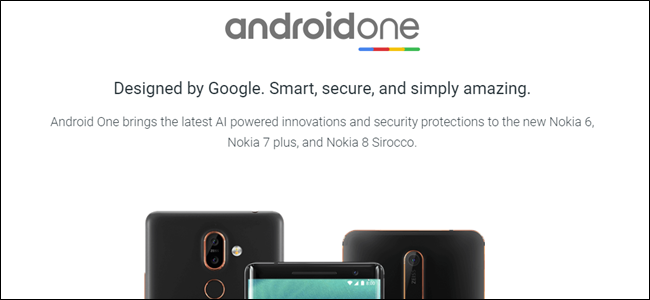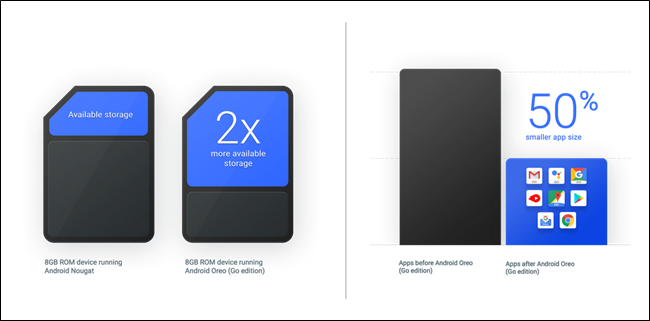Quick Links
Android One was originally an initiative to bring low-cost Android phones to developing countries. However, Google has shifted directions, making Android One a more user-focused program to bring more stock Android phones to market.
What Android One Was: A History Lesson
Android One was created as an initiative to release functional, practical, and usable smartphones for emerging markets. It was designed as a marriage of hardware and software---lower end hardware to keep costs down, combined with software maintained and updated by Google.
Google laid out the general hardware requirements that manufacturers were to use in Android One phones, so most of the initial phones featured the same basic hardware: a MediaTek 1.3GHz quad-core SoC, 1GB of RAM, and 4GB-8GB of storage. Most of the first generation One phones also featured a meager 480x854 display resolution.
Outside of the hardware requirement, manufacturers were also to adhere to specific software rules: the phones had to run unmodified stock Android and receive regular security updates. But since the updates were controlled by Google, the latter requirement wasn't really an issue for the manufacturer.
So the general idea for Android One at inception was this: low cost phones for emerging markets that ran stock Android and had a focus on security.
But then the idea evolved.
What Android One is Now
Today, Android One isn't just for emerging markets, and it's not limited to low-end hardware. The core software philosophy is still there: stock Android and security updates are still very much a part of Android One handsets. And, much like Pixel phones, every Android One phone is guaranteed to receive at least two years of OS updates directly from Google.
The main difference now is that manufacturers aren't limited to low-end hardware and basic designs for these phones. Instead, they're free to build them as they want to, free from design or hardware limitations. The Motorola Moto X4 Android One Edition is a great example here.
But as a result, that also means the prices of these handsets are no longer the budget bin devices they once were. Ranging from $250-$400 (and above), they're still more affordable than most flagship phones, but still much more expensive than the initial One devices.
To put it in simple terms: Android One can be likened to a modern day Nexus program, but exclusively defined in software. Just like the Nexus phones of yesteryear, they run stock Android and are updated by Google. In its earlier days, the Nexus program used a very similar philosophy: affordable handsets maintained by Google. The primary difference with Android One is that Google doesn't design the hardware---think of it like a more open Nexus program.
But What About Low Cost Phones for Emerging Markets?
Google hasn't forgotten about what it set out to do with Android One, so another program was born: Android Go. Instead of having any hardware requirements, Android Go is purely software focused. It's built off of Android Oreo, and optimized for low-end, lost-cost hardware.
In its current state, Android Go uses a modified version of Oreo designed to run well on the most basic hardware---it's smaller (about half the size of "normal" Android) and faster. Google also designed a series of apps to go along with Android Go, including YouTube Go, Files Go, and several others. It's all about optimizing that experience on hardware that would otherwise perform poorly with a standard version of Android and its core apps.
The idea here is one that makes a lot of sense: instead of defining the maximum hardware specs, optimize the software to run well on low end hardware, then let manufacturers decide what that means. The end result will ultimately work itself out---the first Android Go phone available in the US is the $80 ZTE Tempo Go, for example. Eighty dollars for a smartphone. And since the software has been fully optimized to run on extremely limited hardware, it should provide a decent---usable, at the very least---experience.
While Android One started off with a different goal, the current program is a smart one. Making more stock Android phones that are updated by Google is a fantastic idea. And the birth of Android Go makes a lot more sense for emerging markets---a special version of Android built just for cheaper handsets is a brilliant strategy.




